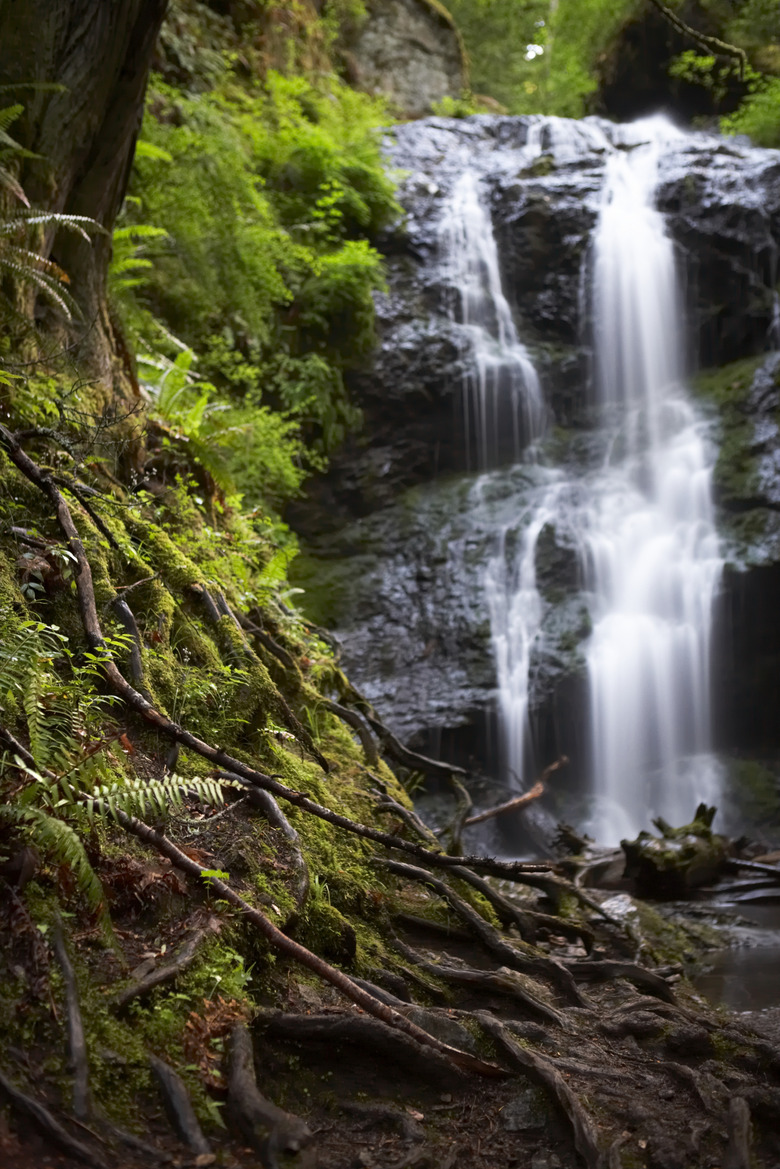High Humidity Effects On Photosynthesis
Plants do something other living things cannot do. They produce their own food internally. Three simultaneous and related processes are taking place in living, green plants: respiration, transpiration and photosynthesis. Photosynthesis is the process that produces food for the plant that is used for both respiration (metabolism) and growth. Humidity affect photosynthesis, but it does not affect photosynthesis the same way in every plant.
Plants and Water
Plants and Water
Plants require water to maintain their turgidity and cell flexibility, and to keep the plants cool in hot weather. They also use water that is transported from the roots as a vehicle to carry key minerals and nutrients from the ground to the rest of the organism. Plants lose some of that water through evaporation, which is caused by a difference between the fluid levels in the plants and the humidity of the air. If there is greater humidity, the surfaces of plants lose less water by evaporation, which lowers the demand for water from the roots.
Transpiration and Photosynthesis
Transpiration and Photosynthesis
The process of water moving through the plant and back out into the atmosphere is called transpiration. On the surfaces of leaves are structures called stomata that conduct several functions. Stomata draw in carbon dioxide and oxygen that is used in photosynthesis, and they release used oxygen along with the water that is being released after the plant uses it. The release of water is the last step in transpiration.
Facilitated and Non-Facilitated Transpiration
Facilitated and Non-Facilitated Transpiration
Some plants live exclusively underwater where the surrounding humidity is always 100 percent and evaporation is not possible. Plants that live out of water can transpire passively by evaporation, wherein the difference between the humidity of the gas in the stomata and the surrounding air causes the water in the stomata to diffuse outward. In underwater plants or plants that live in very high humidity year round, the plants have evolved organic pumps that push the oxygen and used water out. This is called facilitated transpiration. Plants that have evolved facilitated transpiration are unaffected by high humidity, and in fact require it.
The Balancing Act
The Balancing Act
Plants that rely on non-facilitated transpiration do very well at humidity levels up to approximately 80 percent. Beyond that, there are some plants that will slow down photosynthesis in order to devote more attention to transpiration. For people who are growing plants who want to encourage maximum photosynthesis, information on the humidity needs of the individual plant is important; and barring any research, they can experiment with humidity levels to find the optimum balance between ambient humidity and photosynthesis.
Cite This Article
MLA
Goff, Stanley. "High Humidity Effects On Photosynthesis" sciencing.com, https://www.sciencing.com/high-humidity-effects-photosynthesis-12060330/. 24 April 2017.
APA
Goff, Stanley. (2017, April 24). High Humidity Effects On Photosynthesis. sciencing.com. Retrieved from https://www.sciencing.com/high-humidity-effects-photosynthesis-12060330/
Chicago
Goff, Stanley. High Humidity Effects On Photosynthesis last modified March 24, 2022. https://www.sciencing.com/high-humidity-effects-photosynthesis-12060330/
